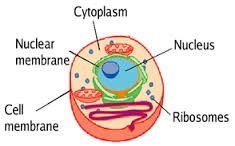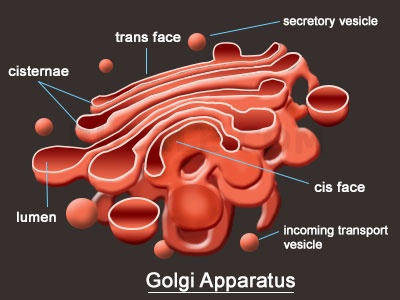DETAIL OF ORGANELLES:
1). Mitochondria:
Mitochondria are called power house of the cell, because of storage of energy in the form of ATP, during cellular respiration. The number of mitochondria depends on the activity of the cell. Mitochondria are bounded by a double membrane. The outer membrane of mitochondria controls the exchange of chemicals. The inner membrane has many enfolding called “Cristae” .It is filled with matrix, a fluid that contains DNA and enzymes.

2) Ribosomes:
Ribosomes are found in all procryatic and eukaryotic cells. It is formed in Nucleolus. It is composed of protein and RNA (Ribonucleic acid) .It may free or attached with Rough Endoplasmic Reticulum.

3) Golgi bodies:
Golgi bodies are discovered by Italian Biologist Golgi in 1898.
They are also called Golgi apparatus .

Golgi bodies are present in both plant and animal cells .They are s set of flattened sacs of fibers or flattened disc in shape.

Golgi bodies are responsible for the secretions of the cell that can be transported to other cells.
4) Endoplasmic reticulum:
The word “Endo” means inside, plasmic means Cytoplasm and retula means network.
Endoplasmic reticulum is a network of internal channels system present between the cell membrane and the nuclear membrane. The main function of this organelle is the synthesis of proteins and lipid formation..It also helps to transport materials.
Types of endoplasmic Reticulum:
There are two types of endoplasmic reticulum.
1. Smooth endoplasmic reticulum:
It lacks ribosomes on its surface, therefore gives smooth appearance. It is responsible for the formation of lipid and transportation of materials from one part to the other part of the cell.
2. Rough Endoplasmic Reticulum:
It has rough appearance because Ribosomes are present on its surface. Its function is protein synthesis. It also helps to transport material from Nucleus to cytoplasm.

5. Lysosome:
They are single bound organelles.They contain digestive enzymes and work for the break down of food materials in the cell.

Note: IN MY NEXT I SHALL DESCRIBE OTHER ORGANELLES PLASTIDS , CENTRIOLES AND VACUOLES.




